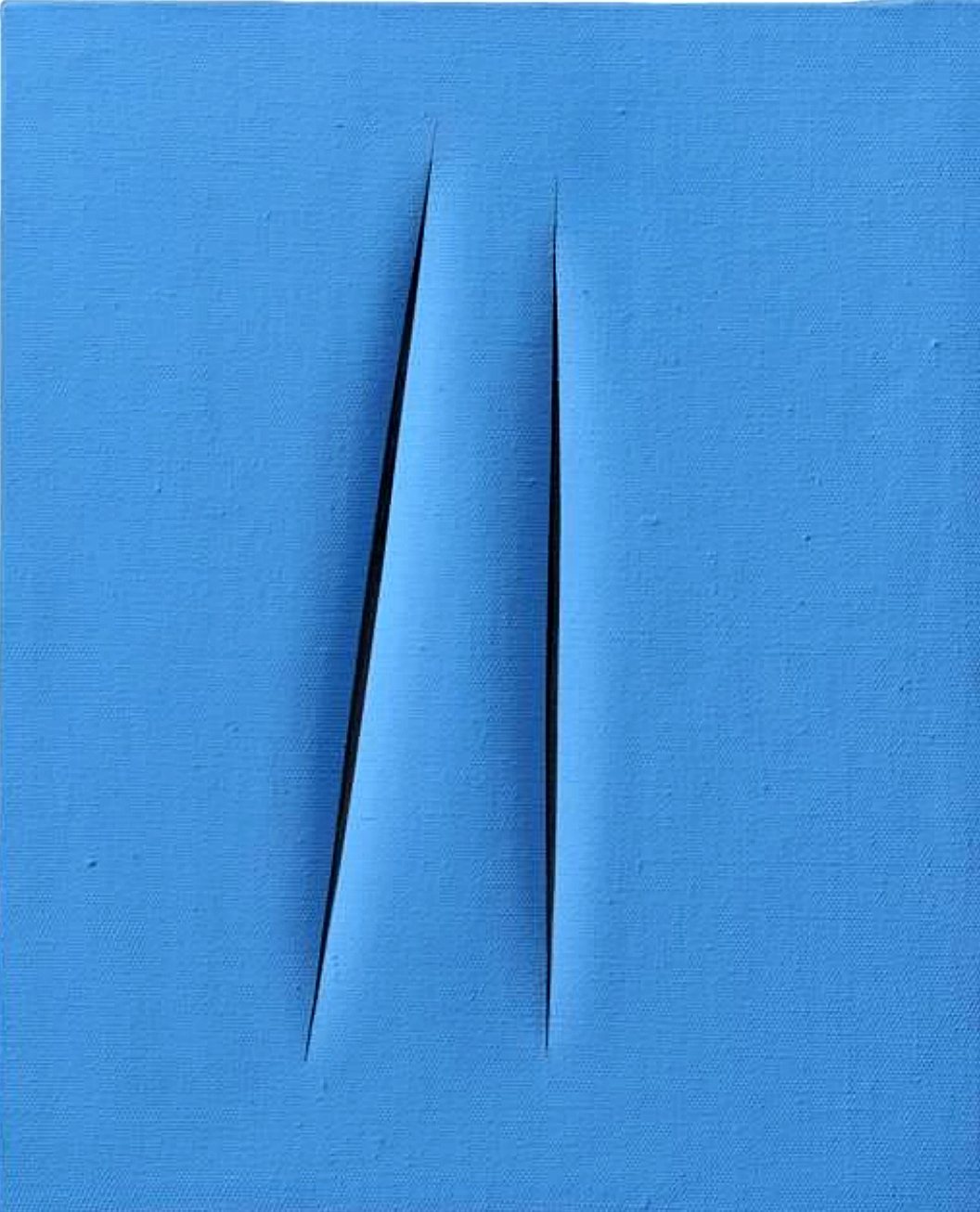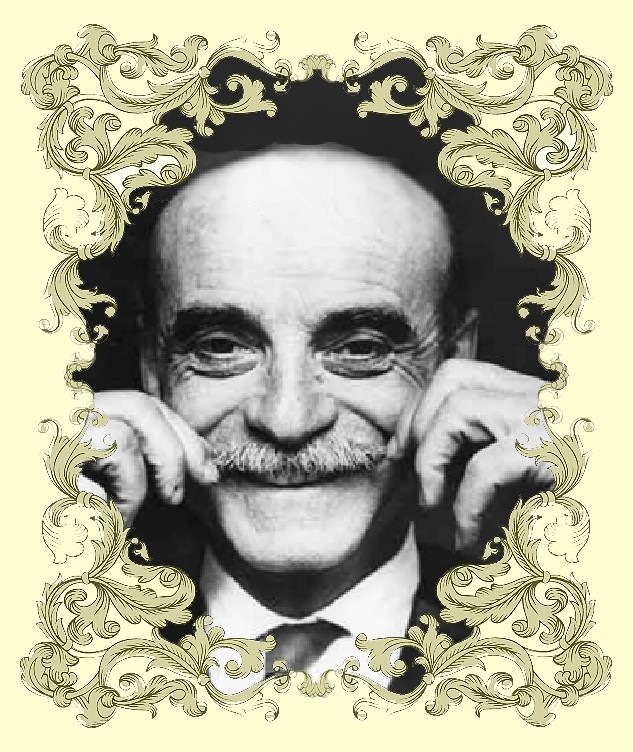LUCIO FONTANA
Concetto Spaziale
LUCIO FONTANA
Concetto Spaziale
LUCIO FONTANA
Concetto Spaziale Natura
LUCIO FONTANA
Concetto Spaziale Attese
LUCIO FONTANA
Concetto Spaziale Natura

LUCIO FONTANA
1899 - 1968
BIOGRAPHY
Lucio Fontana was born on February 19, 1899,
in Rosario de Santa Fé, Argentina. His father
was Italian and his mother Argentinean. He
lived in Milan from 1905 to 1922 and then
moved back to Argentina, where he worked
as a sculptor in his father's studio for
several years before opening his own. In
1926, he participated in the first exhibition
of Nexus (formed in 1907), a group of young
Argentinean artists in Rosario de Santa Fé.
On his return to Milan in 1928, Fontana enrolled
at the Accademia di belle arti di Brera,
which he attended for two years.
The Galleria del Milione, Milan, organized
Fontana's first solo exhibition in 1930.
In 1934, he joined the group of abstract
Italian sculptors associated with the gallery.
The artist traveled to Paris in 1935 and
joined the group Abstraction-Création (Abstraction
Creation, 1931-36). The same year, he developed
his skills in ceramics in Albisola, Italy,
and later at the Sèvres factory, near Paris.
In 1939, he joined the Milanese anti-Fascist
artists' group Corrente (Current, 1938-43).
He also intensified his lifelong collaboration
with architects during this period.
In 1940, Fontana moved to Buenos Aires. With
some of his students, he founded in 1946
the Academia de Altamira, from which emerged
the "Manifesto blanco" (White manifesto,
1946). He moved back to Milan in 1947 and
in collaboration with a group of writers
and philosophers signed the "Primo manifesto
dello spazialismo" (First manifesto
of spatialism). He subsequently resumed his
ceramic work in Albisola to explore these
new ideas with his Concetti spaziali (Spatial
concepts, 1949-60).
The year 1949 marked a turning point in Fontana's
career; he concurrently created his first
series of paintings in which he punctured
the canvas with buchi (holes), and his first
spatial environment, a combination of shapeless
sculptures, fluorescent paintings, and black
lights to be viewed in a dark room. The latter
work soon led him to employ neon tubing in
ceiling decoration. In the early 1950s, he
participated in Italian Art Informel exhibitions.
During this decade, he explored working with
various effects, such as slashing and perforating,
in both painting and sculpture. The artist
visited New York in 1961 during a show of
his work at the Martha Jackson Gallery. In
1966, he designed opera sets and costumes
for La Scala, Milan.
In the last year of his career, Fontana became
increasingly interested in the staging of
his work in the many exhibitions that honored
him worldwide, as well as in the idea of
purity achieved in his last white canvases.
These concerns were prominent at the 1966
Venice Biennale, for which he designed the
environment for his work, and at the 1968
Documenta, Kassel, West Germany. Fontana
died on September7, 1968, in Comabbio, Italy.
THE SPATIALISM
Spatialism (Italian: Spazialismo) is an art
movement founded by Italian artist Lucio
Fontana in Milan in 1947 in which he grandiosely
intended to synthesize colour, sound, space,
movement, and time into a new type of art.
The main ideas of the movement were anticipated
in his Manifesto bianco (White Manifesto)
published in Buenos Aires in 1946. In it
he spoke of a new "spatial" art
in keeping with the spirit of the post-war
age. It repudiated the illusory or "virtual"
space of traditional easel painting and sought
to unite art and science to project colour
and form into real space by the use of up-to-date
techniques such as neon lighting and television.
Five more manifestos followed; they were
more specific in their negative than their
positive aspects, and carried the concept
of Spatialism little further than the statement
that its essence consisted in "plastic
emotions and emotions of colour projected
upon space". In 1947 Fontana created
a "Black Spatial Environment",
a room painted black, which was considered
to have foreshadowed Environment art. His
stabbed and slashed canvases (beginning in
1949 and 1959 respectively) are also considered
to embody Spatialism. An example of the slashed
type (the slash made with a razor blade)
is Spatial Concept Waiting (1960, Tate,London).
Although Fontana's ideas were vague, his
outlook was influential, for he was one of
the first, certainly the first European artist
to truly promote the idea of art as gesture
or performance, rather than as the creation
of an enduring physical work.
THE SPATIALISM
IN ARTE EST LIBERTAS
MOVEMENTS-ARTISTS







